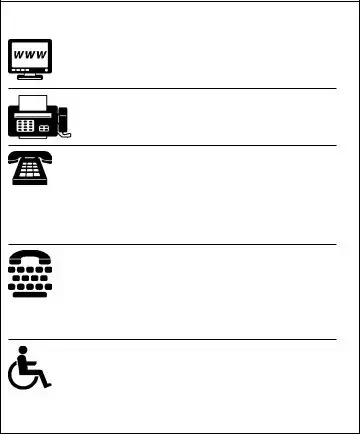Use this form to claim a refund of New York State estate tax only for the following types of claims:
Protest of denied refund — If the Tax Department has denied or adjusted your refund for any reason other than offsets to amounts owed to other agencies or tax liabilities, you may immediately ile a formal claim for refund.
Protective claim * — A protective claim is a refund claim that is based on an unresolved issue(s) that involves the Tax Department or another taxing jurisdiction that may affect your New York State estate tax. The purpose of iling a protective claim is to protect any potential overpayment when the statute of limitations is due to expire.
Protest of paid bill * — If the bill was based on Form DTF-960, Statement of Proposed Audit Changes; Form DTF-966.1, Notice and Demand for Payment of Tax Due; or Form DTF-961, Notice of Additional Tax Due, enter your 10-digit assessment ID in the space provided on line 1.
*Note: Your protective claim or protest must be iled within three years from the time the return was iled or within two years from the time the tax was paid, whichever is later.
File all other claims, for dates of death after May 25, 1990, and before February 1, 2000, on Form ET-90, New York State Estate Tax Return, and write AMENDED at the top of the return. For dates of death on or after February 1, 2000, ile Form ET-706, New York State Estate Tax Return, and mark an X in the box on the top of the front page of the return.
Executor information
Enter the name (last name irst) and other information for the executor of the estate. The term executor includes executrix, administrator, administratrix, or personal representative of the decedent’s estate; if no executor, executrix, administrator, administratrix, or personal representative is appointed, qualiied, and acting within the United States, executor means any person in actual or constructive possession of any property of the decedent.
If an executor has not been appointed, this form may be signed and iled by a person having knowledge of all the assets in the decedent’s estate. This person must also enter his or her name, address, and social security number in the area provided for the executor on the front of this form.
If the estate has more than one executor, mark an X in the box, enter the name and other information for the primary executor (preferably a person residing in New York State) in the area provided, and attach a list of each of the other executors with their mailing address and social security number if not previously submitted. Submit Letters Testamentary or Letters of Administration with this form if not previously submitted. It is suficient to have one of the coexecutors sign this form.
Attorney/representative information
If you, as the executor of the estate, have authorized a person to represent you regarding the estate, and you would like the department to contact him or her regarding the estate, enter the name (last name irst) of the attorney, accountant, or enrolled agent who is representing you. Also enter the irm’s name, address, and telephone number in the areas provided, and have the representative sign in the area provided on the front of this form.
Note: If you are giving a person power of attorney to represent you, attach a completed Form ET-14, Estate Tax Power of Attorney, if one was not submitted previously. Refer to the instructions on Form ET-14 for additional information.
Sign this claim and mail to:
NYS TAX DEPARTMENT
TDAB - ESTATE TAX AUDIT
W A HARRIMAN CAMPUS
ALBANY NY 12227
Privacy notification
The Commissioner of Taxation and Finance may collect and maintain personal information pursuant to the New York State Tax Law, including but not limited to, sections 5-a, 171, 171-a, 287, 308, 429, 475, 505, 697, 1096, 1142, and 1415 of that Law; and may require disclosure of social security numbers pursuant to 42 USC 405(c)(2)(C)(i).
This information will be used to determine and administer tax liabilities and, when authorized by law, for certain tax offset and exchange of tax information programs as well as for any other lawful purpose.
Information concerning quarterly wages paid to employees is provided to certain state agencies for purposes of fraud prevention, support enforcement, evaluation of the effectiveness of certain employment and training programs and other purposes authorized by law.
Failure to provide the required information may subject you to civil or criminal penalties, or both, under the Tax Law.
This information is maintained by the Manager of Document Management, NYS Tax Department, W A Harriman Campus, Albany NY 12227; telephone (518) 457-5181.
Need help?
Internet access: www.nystax.gov
(for information, forms, and publications)
Fax-on-demand forms: Forms are |
|
available 24 hours a day, |
|
7 days a week. |
1 800 748-3676 |
Telephone assistance is available from 8:00 A.M. to 5:00 P.M. (eastern time), Monday through Friday.
Estate Tax Information Center: |
(518) |
457-5387 |
In-state callers without free long distance: |
1 800 |
641-0004 |
To order forms and publications: |
(518) |
457-5431 |
In-state callers without free long distance: |
1 800 |
462-8100 |
Text Telephone (TTY) Hotline (for persons with hearing and speech disabilities using a TTY): If you have access to a TTY, contact us at 1 800 634-2110.
If you do not own a TTY, check with independent living centers or community action programs to ind out where machines are available for public use.
Persons with disabilities: In compliance with the Americans with Disabilities Act, we will ensure that our lobbies, ofices, meeting rooms, and other facilities are accessible to persons with disabilities. If you have questions about special accommodations for persons with disabilities, call the information center.


 an attorney
an attorney 
 a certiied public accountant
a certiied public accountant 
 an enrolled agent a public accountant enrolled with the New York State Education Department
an enrolled agent a public accountant enrolled with the New York State Education Department